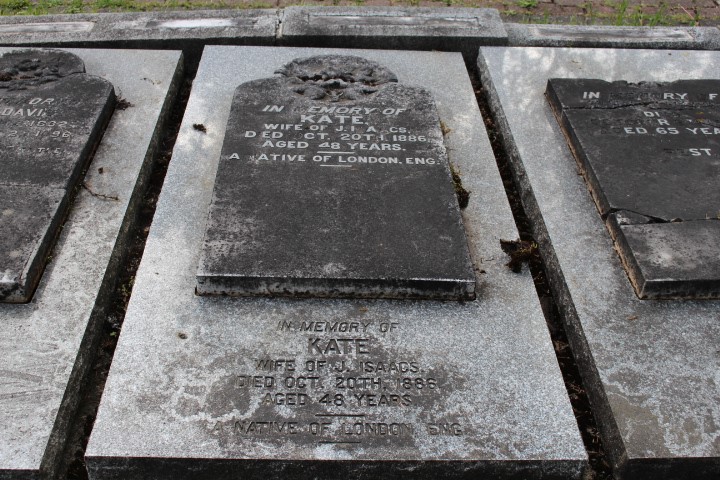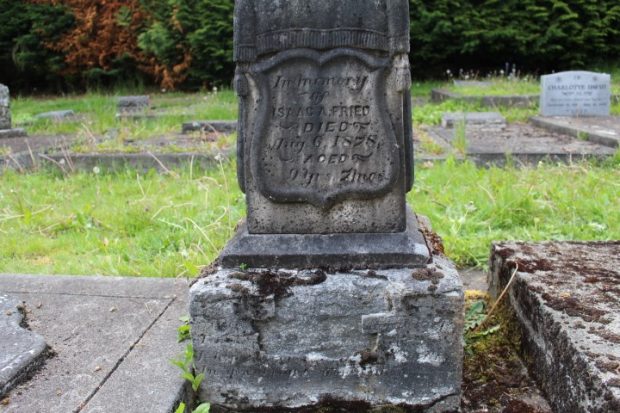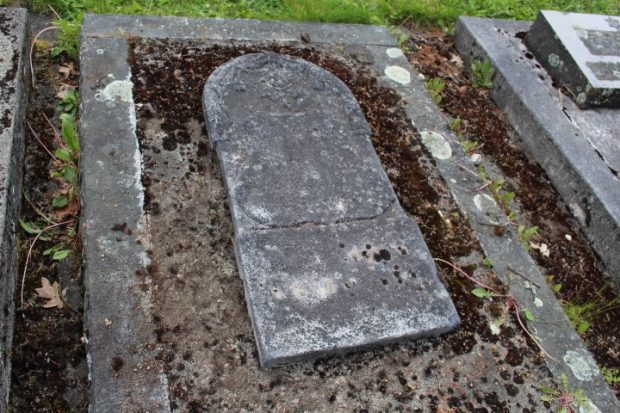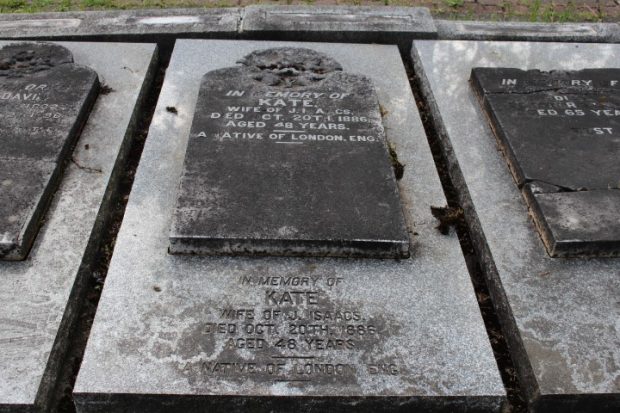Yesterday, May 18th, was the third excursion to the Jewish Cemetery and luckily the weather decided to be relatively pleasant this time around. Although it wasn’t the sunniest, it was warm enough that we were able to comfortably record/ amend the monument sheets we had begun to work on in the previous classes, without having to use several layers to stay warm.
We were also lucky enough to have a couple guest speakers today, including the caretaker of the cemetery, Geoffrey Perkins, who was there to dig the grave but took time to speak to us. We were also visited by Carl Hughes, a memorial conservationist from Meadowlark Memorials, as well as Marla Mackinnon, a UVic PhD student, who came to show us the tricks to take photogrammetry pictures.
We began the day viewing the digging of a fresh grave. It was interesting to see “the hole” in reality versus in books or pictures. Albeit, this grave was just shy of the regular 6 feet depth due to complications with the landscape, which included underlying bedrock that would need to be blasted to remove. Even so, it was surreal to see how far it really did go down, and how the roots of the surrounding plant matter just clung to the sides, seeming to hold the walls of the grave in place.
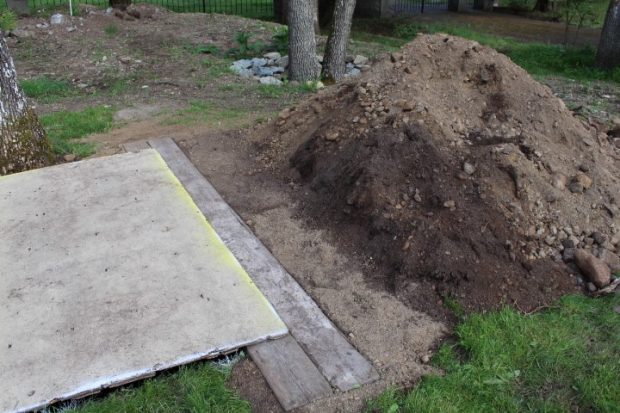 Figure 1. Picture of the fresh grave that was dug on May 18, 2017, covered with a wooden sheet.
Figure 1. Picture of the fresh grave that was dug on May 18, 2017, covered with a wooden sheet.
After our little viewing of the open grave, we continued to go about our gravestone recording until Carl Hughes was available. He was very knowledgeable in the types of stone used to create the memorials and was even able to point out discrepancies in the type of stone we originally thought to be a different material. He did this in a couple of areas including the base of the monument in figure 2, which was a type of sandstone, as well a family plot with three identical monuments, which he suspected could possibly be of limestone, due to irregular strand patterns in the stone.
Figure 2. Picture of a marble monument with a sandstone base.
He even went into detail of what some of the symbolism on gravestones meant, which I found to be very interesting. A flower could have different meanings depending on how much the flower had been made to bloom on the monument. An open flower was representative of a long life, while a fully wilted flower may have meant a very short one. Even wheat, as relayed by Carl, was significant as the fields of wheat symbolized growing and life, then being cut down by the “reaper” when they died.
On the more technical side, Carl was able to explain how conserving monuments could be done incorrectly, or be done more than once in order to conserve the piece. Incorrect conservation amounted to the use of “un-breathable” material to bind or inset the monument. For example, laying a marble piece down on concrete would deteriorate the piece further as the concrete is a harder rock than the marble and would not allow it to “breathe.” Other instances of improper care would be the use of pressure washing or sand blasting that wears away the soft stone.
Figure 3. Example of a conserved monument; marble monument inset in a concrete base.
Figure 4. Example of a well conserved monument, which is able to “breathe”; marble laid down in granite.
This leads us to the topic of inscriptions, which is a large reason that photogrammetry is needed. Some of the inscriptions are more visible than others. According to Carl, some masons, when trying to conserve, sometimes blast away the face of the monument with pressure washing or sand blasting in order to make the rock look “clean” again. This often leads to destruction of the original inscription, especially if the text was not very deep in the stone. The inscriptions that have fully worn away are often indecipherable with the naked eye, but are visible through the use of photography and 3D modelling programs that allow us to see remnants of the text that was there. This is very useful in this course as many of the gravestones have inscriptions that are too far gone to read with no help. It is also just a very cool thing that we are now able to make three dimensional images that can be used to pull out information that was not readily available to us before.
